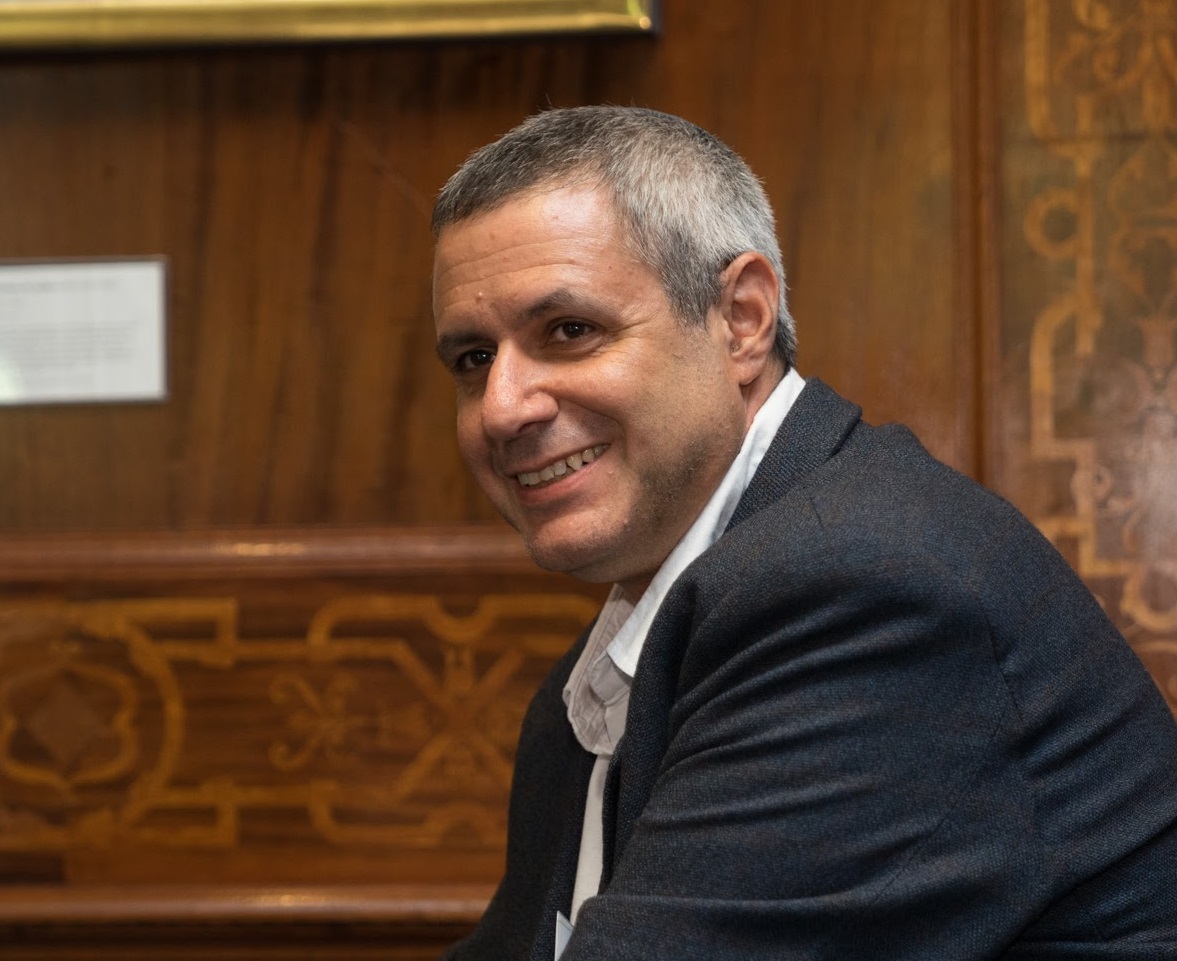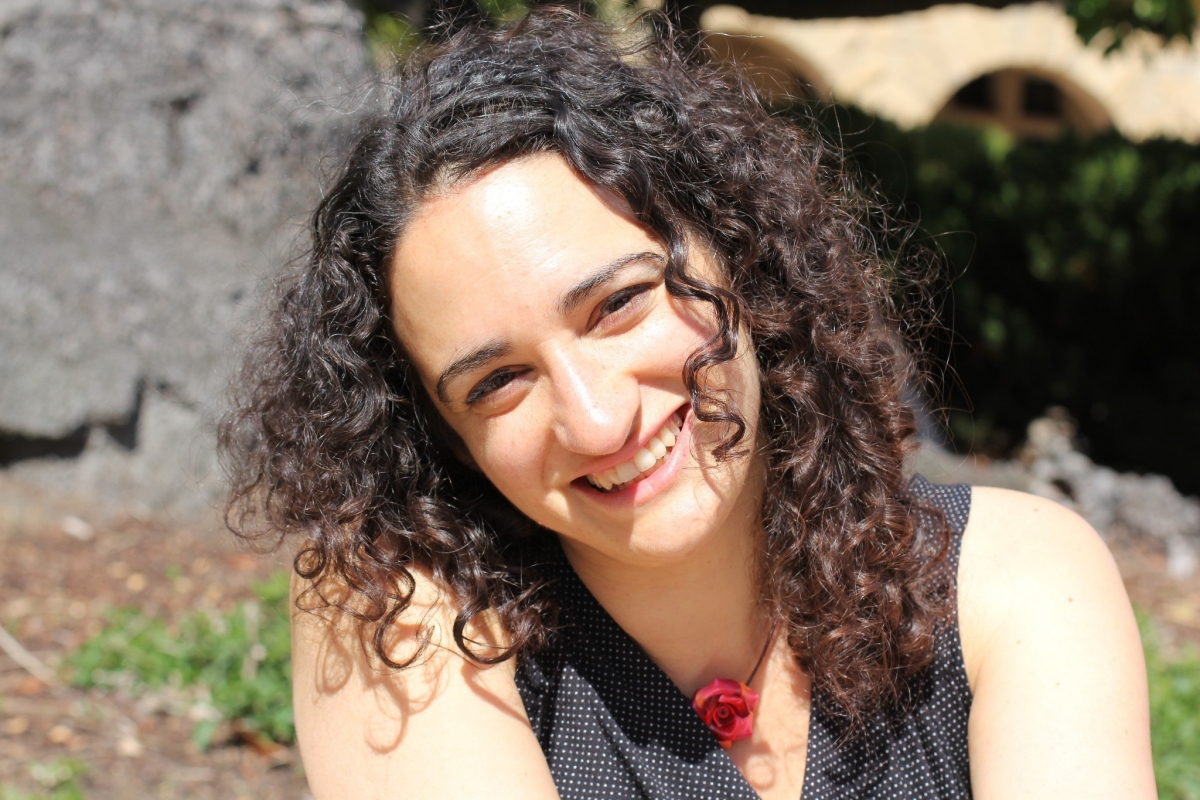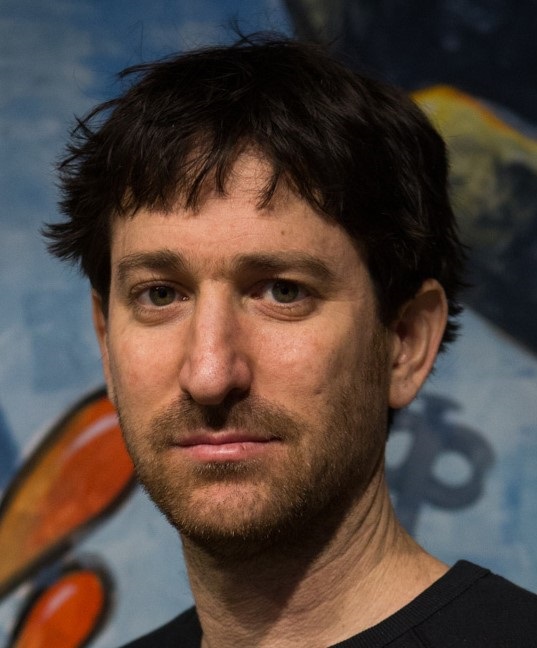Startup, Evolution and the Future of Education: Educational Technological Entrepreneurship as a key to New Pedagogy

Avi Warshavsky
MindCET CEO
Experiencing Molecular Models of Matter
Sharona T. Levy
University of Haifa
Elon Langbeheim
Weizmann Institute of Science
Sigal Samon
University of Haifa
Asnat Zohar
University of Haifa
Janan Saba
University of Haifa
Lecture Abstract
Molecular models of matter are the foundations on which the edifice of chemistry stands. The concepts of molecular motion and inter-molecular bonding are essential for the explanations of macroscopic properties of matter such as phase change and volume changes in gases. In this session, we will introduce four novel technological approaches to introducing the molecular model of matter in secondary schools: 1. A participatory simulation in which students play the role of particles, 2. An embodied Micro-world in which students explore interatomic interactions as a balance between repulsion and attraction. 3. A curriculum on the kinetic molecular theory, combining simulation and laboratory investigations 4. The construction of molecular models of gases by students. The participants in the workshop will try out each technology first hand, and will discuss the context of its implementation into the curriculum.
A tangram-based puzzle as a tool of developing geometric thinking levels in technological and tangible environments
Huda Shayeb and Michal Tabach
Tel-Aviv University
Lecture Abstract
This research explored how an intervention using a tangram-based puzzle in technological and tangible environments affects kindergarten children’s concepts and reasoning about triangles. The children's answers regarding their reasoning were analyzed to identify which of the geometric thinking levels (Van Hila's theory) this reasoning reflected. The research design included two intervention groups and two control groups. One intervention group and one control group were interviewed in a computerized environment, while the other two groups were interviewed in a tangible environment. All the participants underwent pre- and post-intervention interviews. The results suggest that the way kindergarten children learn about triangles in the two environments was similar. In the post-intervention interviews, all the children from the two intervention groups (computerized and tangible) were able to justify their identification of triangles. The justifications reflected a shift in the children's geometrical thinking to the second Van Hiele level (1986). Such a change was not observed among the children in the control groups. Nevertheless, a marked difference was noted among the children in the intervention group between their pre-intervention interview and post- intervention interview reasoning in identifying triangles. In general, tangrams can be used as a tool for learning geometry, and it may promote the level of children's geometrical thinking (Van Hiele levels). However, due to small sample size, it wasn’t possible to determine the changes’ significance.
Visual skills and their importance in teaching and in online exams in biology

Rivka Misgav
Biology moderator and MSc student in The Rothschild-Weizmann Program
Lecture Abstract
The Ministry of Education's pedagogical secretariat is leading a computerized examination process, in order to promote computerized teaching in the various disciplines.
Biology was chosen to be one of the first disciplines to undergo this process. In the online Biology exam, students are required to cope with a variety of visual skills, beyond the ones familiar to them.
The media-intensive exam in Biology, similarly to its teaching, combines videos, animations and simulations, which constitute a multi-sensory experience relevant to learners.
Such e-learning requires the development of unique skills to decipher the visual means that are integrated into it, but so far, no tools have been developed for the decoding and learning of visual means.
Imparting visual skills will advance the learners and provide them with important tools and life skills.
In this lecture I will try to highlight the importance of using visual tools in teaching Biology and the importance of acquiring skills in visual literacy.
Parts of the online Biology exam alongside with insights regarding this way of examination, and various examples illustrating both the need for those skills and teaching methods recommended for them will be presented.
Making sense of phenomena by using a free online modeling tool

Tom Bielik
Michigan State University
Lecture Abstract
Scientific modeling is a key practice that engages students in making sense of phenomena, solving problems, and communicating scientific knowledge. Scientists and engineers use models when working with complex systems, and students should have opportunities to develop their modeling practice in science class. The modeling practice includes building models that represent relationships between components in a system, using models to explain and predict phenomena, evaluating models based on peer critique and evidence-based reasoning, and revising models based on new findings. In this workshop, I will present an online computational modeling tool, SageModeler, designed to engage secondary students in building, using, revising, and sharing models to investigate relationships between variables within a system, and how using this tool can contribute to the development of students’ modeling practice. Participants will engage with the tool to design and use their own models.
"It’s probably their fault because they suck”: Cultivating Perspective Taking through Game Making
Gidi Dishon
Tel Aviv University
Lecture Abstract
Recent years have been characterized by increasing interest in how the learning sciences could concurrently support social and civic causes. I contribute to this research by offering a constructionist approach to cultivating perspective taking, defined as the consideration of others’ mental states and subjective experiences. To do so, I present vignettes from a collaborative game-making workshop in which high-school freshmen created digitally augmented versions of carnival games using Scratch and MaKey-MaKey. In my analysis, I focus on how iterative design entails translating abstract insights concerning users’ perspective to concrete changes in the design, thus functioning as an object-to-think-with in the case of perspective taking.
Ecological learning of a foreign language in a virtual reality environment

Orly Fuhrman
The Center for Educational Technology
Lecture Abstract
In this study we explore the contribution of motor interaction in a virtual reality environment to foreign language learning. Learning a new language in real life is embedded in context: physical, social, sensory and motor. Studies have shown that this context affects the way concepts (represented by words) are remembered and used. Accordingly, enriching language learning with multi sensory information as well as motor interaction promotes successful learning, e.g better memory of the new vocabulary learned. Virtual reality technology presents an interesting opportunity to bring language to life by enriching the sensory and motor context of learning. As they create a ‘true-to-life’ bodily presence, learners in VR environments can both experience their surroundings in a multi sensory rich way, and affect the environment by interacting with. In our project, participants explore a virtual room where they encounter daily objects (e.g, a hat) and learn their names in a foreign language. In one condition, they interact with the object in a natural (‘ecological’) manner (e.g, put the hat on), and in the other they perform a meaningless gesture while learning the object’s name and viewing the object. We predict that natural motor interaction with objects strengthen learning and leads to better memory of the new vocabulary learnt.
Educational Data Mining for Analytics and Adaptivity in Online Learning Environments
Giora Alexandron
The Weizmann Institute of Science
Lecture Abstract
Users’ activity in online learning environments creates digital footprints that are amenable for real-time and post-factum analysis by data science methods. Applications include adaptive learning algorithms that can provide timely feedback and recommend activities for individual students based on their preferences and state of knowledge; and learning analytics that provide actionable insights about students learning, and can be used to improve instruction, optimize the pedagogic design, and identify students at risk.
The Computational Approaches in Science Education (CASEd) research group in the Department of Science Teaching at Weizmann centers on these directions, using machine learning and data mining methods.
In the talk, Giora Alexandron will present results from studies performed on data collected from Massive Open Online Courses (MOOCs) and from K12 Learning Environments. In addition to presenting these studies, he will discuss future research directions of the group.
Perimeter - More Points of View
Gali Shimoni
Israel Center for Excellence through Education
Lecture Abstract
In the Israeli curriculum, students start learning about the perimeter of a polygon in the 2nd grade. In many cases the polygons are drawn on a grid of squares - the length of each side of the squares is 1 unit. As we will see in the workshop, the use of this grid creates, on the one hand, failures (for many students) in calculating the perimeter of a polygon, but on the other hand, it enables us to understand interesting ideas about the perimeter its relationship with the area of the same polygon. Why, for example, a polygon with a larger area does not necessarily have a larger perimeter? Why, from all the rectangles with the same area, the square is the one with the smallest perimeter? In order to fully understand the answers to these questions, we will present additional ways of looking at the perimeter of a polygon - not only according to the basic definition - the sum of lengths of its sides. These methods will enrich and deepen students' understanding of this subject.
The workshop includes theoretical aspects of mathematics education.
Learning Genetics on the Fly: Interrelating Three Conceptual Models in Genetics
Michal haskel-Ittah
Weizmann Institute of Science
Rutgers
The State University of New Jersey
Anat Yarden
Weizmann Institute of Science
Lecture Abstract
Mechanisms are used in science to explain how phenomena come about. One of the challenges of science education is to promote students' ability to generate mechanistic explanations. In the field of genetics, molecular mechanisms underlying genetic phenomena are difficult to teach and learn. Specifically, high school students often have distinct conceptual models of phenomena learned in classical genetics and mechanisms learned in molecular genetics. Connecting these distinct conceptual models is crucial for creating a coherent explanation of genetic phenomena. In this talk I will present a learning environment we developed to support high school students' ability to connect between these conceptual models and will shortly describe a study exploring the use of this learning environment.

